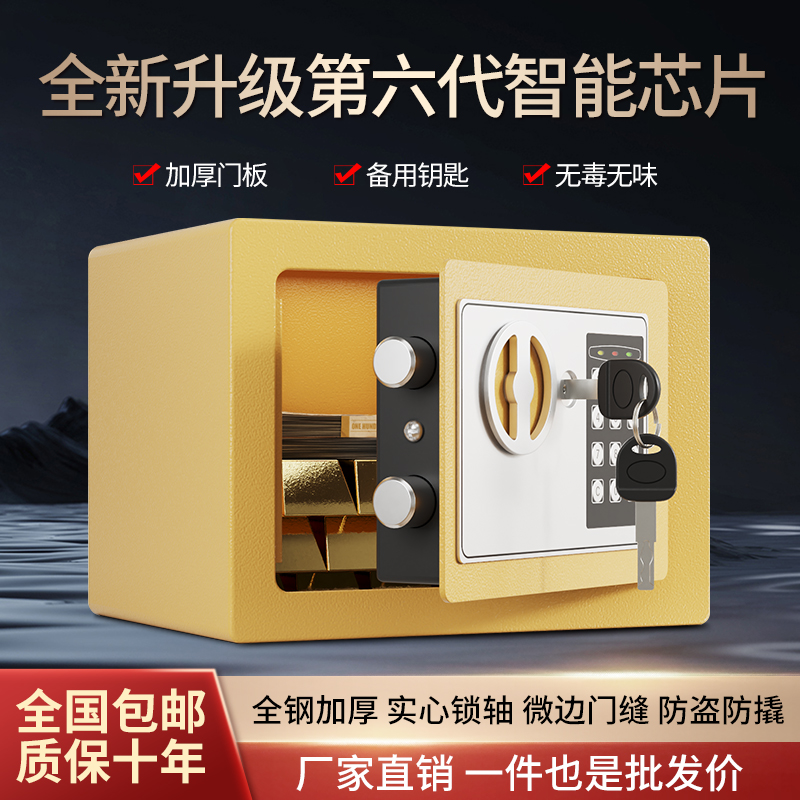保障企业机密:保险柜在办公环境中的应用与实践
甙邵登峰
2024-10-20 21:00:55
0次
**保障企业机密:保险柜在办公环境中的应用与实践**
在当今的商业环境中,企业机密保护显得尤为重要。这些机密可能涉及公司的财务数据、客户信息、商业策略、技术秘密等,一旦泄露,都可能给企业带来巨大的损失。为了确保这些重要信息的安全,除了加强员工的安全意识外,物理层面的安全措施也必不可少。其中,保险柜的应用就是一项重要的安全措施。
一、保险柜在办公环境中的应用
1. 存储敏感文件
保险柜被广泛用于存储敏感的文档和文件。无论是纸质的文件还是电子设备中的数据,都可以被存放在保险柜中以保护其安全。这包括但不限于合同、财务报表、客户信息等。
2. 保护重要设备
除了文件外,许多关键的办公设备也经常存放在保险柜中。如存储有大量公司信息的服务器或数据库硬件设备,以及其他技术产品。
3. 提高物理安全级别
除了传统意义上的安全储存,许多高端保险柜配备了智能锁系统和防火防水材料等特性,它们能够在盗窃、自然灾害或其他物理侵害发生时保护内容不被轻易取出或破坏。
二、保险柜在办公环境中的实践
1. 正确选择和使用保险柜
企业应选择符合其安全需求的保险柜,并确保其被正确地安装在办公环境中。选择保险柜时,除了考虑其外观和价格外,还要考虑其安全性能、耐用性以及维护的便利性。同时,员工需要了解如何正确使用和维护这些设备。
2. 结合其他安全措施 仅仅依靠保险柜可能并不足以确保信息的安全。企业应该将其与其他安全措施(如视频监控、门禁系统等)相结合,形成一个综合的安全防护体系。此外,还需要定期对所有员工进行安全培训,让他们了解如何在紧急情况下保护机密信息。 3. 定期维护和检查 定期的维护和检查对于保险柜的正常运行和性能至关重要。对于经常使用的保险柜,应定期进行清洁和润滑,以防止其因过度磨损而出现故障。同时,企业应定期检查其内部存储的机密信息是否完整无损。 三、翻译成英文: **Application and Practice of Safes in the Office Environment for Protecting Corporate Confidentiality** In today's business environment, protecting corporate confidentiality is of utmost importance. These confidentialities may involve company financial data, customer information, business strategies, technological secrets, among others. Leakage of any such information can result in huge losses for the enterprise. Besides enhancing employee awareness of security, physical security measures are also essential. The application of safes is one such important security measure. **Application of Safes in the Office Environment** 1. Storing Sensitive Documents: Safes are widely used to store sensitive paper and electronic documents, including contracts, financial statements, and customer information. 2. Protecting Critical Equipment: Apart from documents, many critical office equipment is also often stored in safes, such as servers or hardware devices that store large amounts of company information. 3. Improving Physical Security Levels: Many high-end safes are equipped with smart lock systems and fire-resistant and waterproof materials that can protect their contents from being easily taken out or damaged during theft, natural disasters, or other physical attacks. **Practice of Safes in the Office Environment** 1. Correct Selection and Use of Safes: Enterprises should select safes that meet their security needs and ensure they are installed correctly in the office environment. When selecting a safe, consider its security performance, durability, and maintenance convenience, in addition to its appearance and price. At the same time, employees need to understand how to properly use and maintain these devices. 2. Combining with Other Security Measures: Relying solely on safes may not be enough to ensure information security. Enterprises should combine them with other security measures such as video surveillance and access control systems to form a comprehensive security system. Additionally, regular safety training should be provided to all employees to educate them on how to protect confidential information in emergency situations. 3. Regular Maintenance and Checks: Regular maintenance and checks are crucial for the normal operation and performance of safes. For frequently used safes, regular cleaning and lubrication should be carried out to prevent excessive wear and tear leading to malfunctions. At the same time, enterprises should regularly inspect whether the confidential information stored inside is intact and undamaged.相关内容
热门资讯
密码锁、电子锁,哪种类型的办公...
本文讨论了密码锁和电子锁在办公保险柜中的应用,指出每种锁的优缺点及适用场景。密码锁物理安全高,但需防...
密码、指纹、钥匙:解锁保险柜的...
本文介绍了密码、指纹识别和智能钥匙等现代科技解锁保险柜的多种方式,探讨了它们的特点和适用场景。无论选...
高效办公的秘密武器——智能保险...
智能保险柜是现代办公中高效安全的文件存储工具,通过正确选择、设置密码、合理使用特殊功能及维护保养等措...
办公室的守护神:保险柜产品特点...
保险柜产品以高强度材料和先进技术保障安全,广泛用于办公室,可保护财务资产、文件资料和贵重设备。在快速...
密码保险柜使用注意事项及常见问...
密码保险柜使用注意事项包括密码设置、放置位置、操作方式等,并解答了常见问题如忘记密码、无法打开和清洁...
防止数据泄露的利器——办公保险...
本文介绍了办公保险柜在防止数据泄露中的重要性,其采用先进技术、物理保护和权限管理等手段确保数据安全,...
打破传统,迎接智能办公时代——...
随着智能办公时代的到来,保险柜需进行革新升级。智能保险柜采用生物识别、远程控制等技术,提高管理效率和...
保险柜的种类与特点,你了解吗?
保险柜种类多样,包括家用、商用、防爆防砸及移动式等,具有高安全性、多种尺寸和类型、优质材料及便捷操作...
打造安全办公环境,保险柜的选择...
摘要:打造安全办公环境需注重保险柜的选择与配置。应选坚固耐用、具备多锁系统、防火防潮的保险柜,合理配...
办公桌上的守护神——如何选择合...
本文介绍了如何根据实际需求选择合适的保险柜,包括明确需求、了解不同类型、考虑材质和结构、关注品牌和服...



